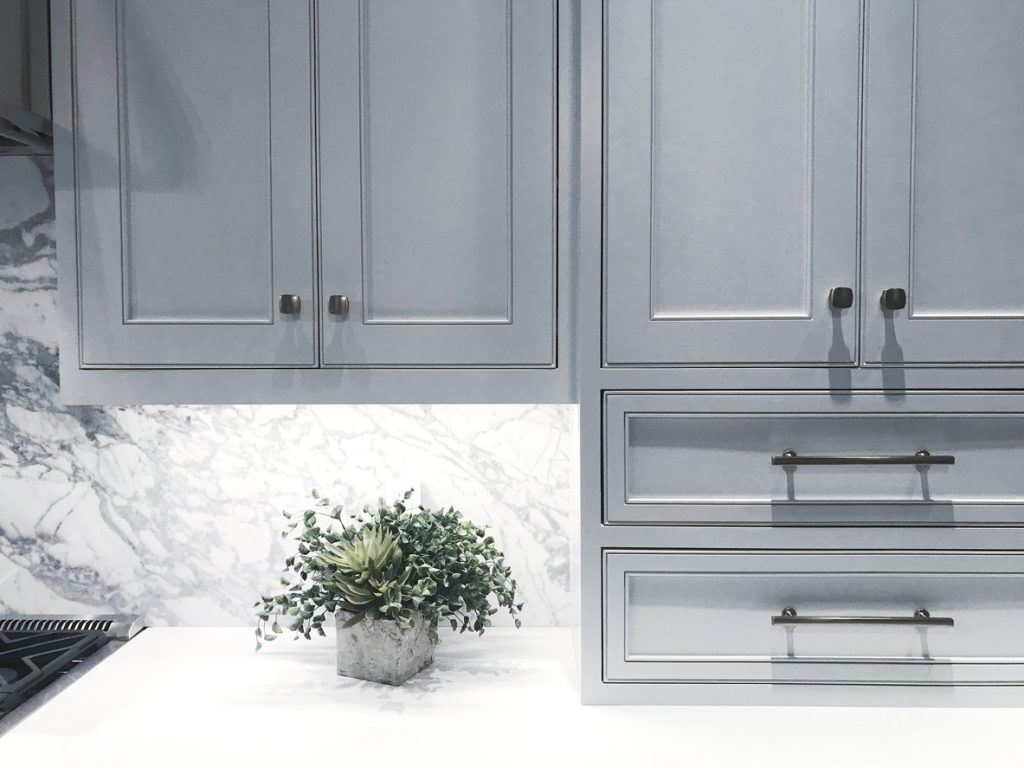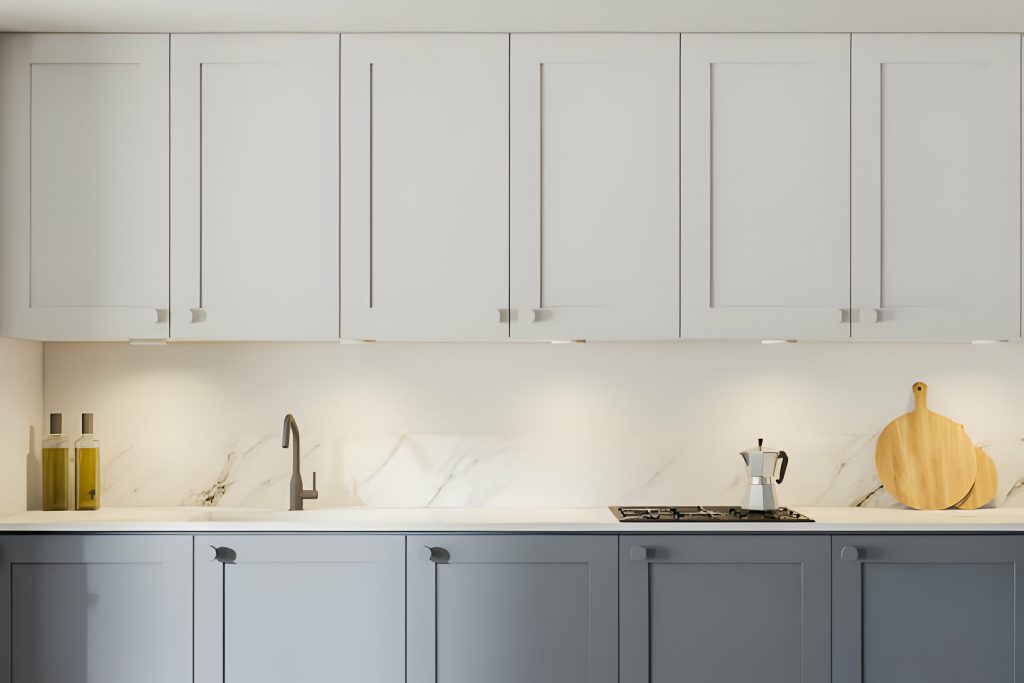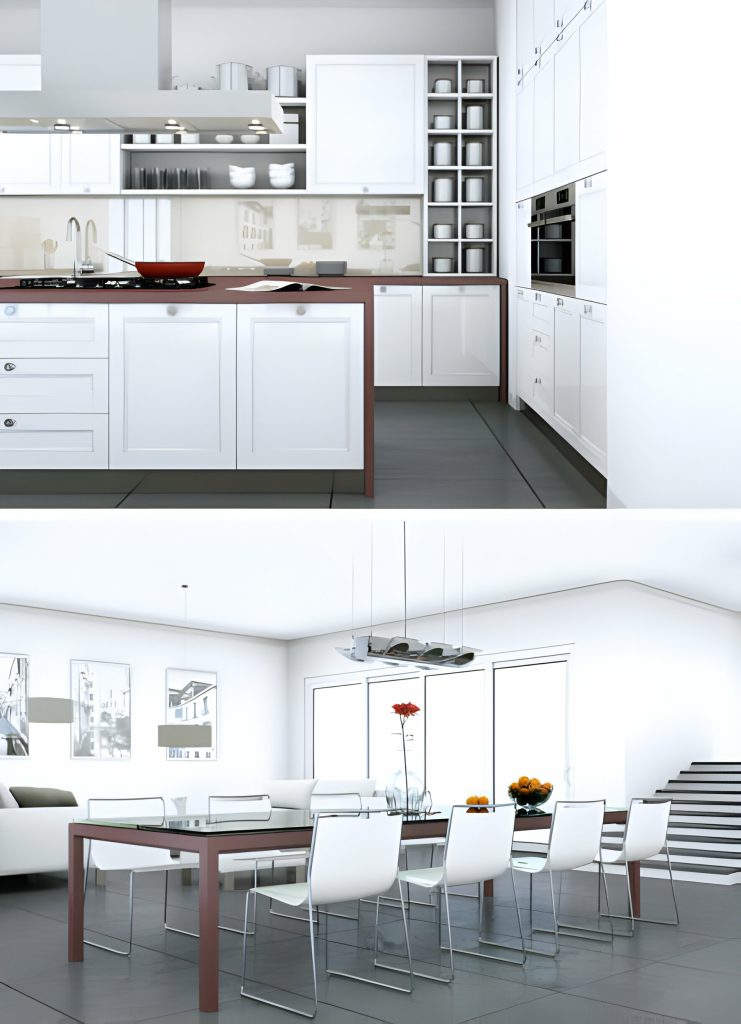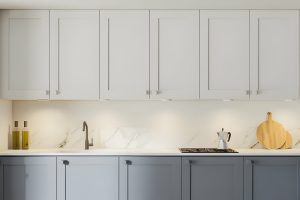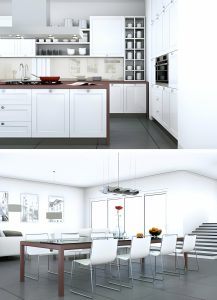In this article, we’ll help you solve the mystery and determine once and for all if your cabinets are indeed thermofoil. With our handy guide, you’ll learn to identify the telltale signs, understand the unique characteristics of thermofoil doors, and even assess the cost and lifespan of these budget-friendly beauties. So sit back, relax, and let’s dive into the world of thermofoil cabinets together!
Signs of Thermofoil Cabinet Surfaces
If you’re unsure if your cabinets are thermofoil, one way to identify them is by looking for a thin layer of vinyl coating applied to the surface. Thermofoil cabinets have certain signs and characteristics that can help you determine if they are made of this material. One sign is that thermofoil cabinets often have a smooth and seamless appearance, with no visible joints or wood grain patterns. They also tend to be more affordable compared to solid wood cabinets, making them a popular choice for budget-conscious homeowners. In terms of materials, thermofoil cabinets are typically made from medium-density fiberboard (MDF) with a vinyl coating. As for maintenance, these cabinets are relatively easy to clean and require minimal upkeep. Regular dusting and wiping with a mild soap solution should keep them looking their best for years to come.
Characteristics of Thermofoil Doors
To determine if your cabinets have thermofoil doors, you can look for slightly rounded edges and distinctive features that are filled in with heavy layers of paint or filler. Thermofoil doors have these characteristics that set them apart from other cabinet materials. One of the advantages of thermofoil is its affordability compared to wood cabinets. It is a cost-effective option for those on a budget. Thermofoil is made from vinyl, which provides a wide range of finishes such as matte, glossy, and textured. These finishes give you flexibility in achieving the desired aesthetic for your kitchen. In terms of maintenance, thermofoil cabinets are easy to clean with mild soap and water. However, it’s important to avoid using abrasive cleaners or scrub brushes that could damage the surface finish. Overall, thermofoil cabinets offer an affordable and low-maintenance solution with various finishes to choose from.
Determining the Cost of Thermofoil Cabinets
You can easily determine the cost of thermofoil cabinets by considering factors such as the linear foot price, customization options, and additional features. Thermofoil cabinets are known for their affordability compared to other cabinet materials like wood. The cost of thermofoil cabinets starts at around $100 per linear foot, making them a budget-friendly choice for kitchen remodels. In addition to their cost-effectiveness, thermofoil cabinets offer other advantages such as durability and easy maintenance. They are resistant to moisture and easy to clean, making them ideal for kitchens and bathrooms. Thermofoil also provides a wide range of colors and finishes, allowing you to customize your cabinets according to your preferences. When choosing countertops to pair with thermofoil cabinets, consider materials like natural stone, quartz, tile, or stainless steel that complement the artificial surfacing of thermofoil.
Materials Used in Thermofoil Cabinets
The materials used in thermofoil cabinets include vinyl, MDF, and heat-resistant adhesives. Thermofoil cabinets have several advantages. They offer a wide range of colors and simulated wood textures, providing versatility in design. The installation process is relatively easy and cost-effective compared to other cabinet options. Thermofoil cabinets are also highly durable, resistant to moisture, and easy to clean. Their seamless finish gives them a sleek visual appeal that can enhance the overall look of your kitchen or bathroom. However, there are some drawbacks to consider. Thermofoil cabinets may be prone to peeling or delamination if exposed to excessive heat or direct sunlight. Additionally, they may not be as durable as solid wood cabinets and may require more frequent maintenance in the long run.
Factors to Consider With Thermofoil Cabinet Maintenance
Regular cleaning and proper maintenance are essential for preserving the appearance and longevity of thermofoil cabinets. To ensure your thermofoil cabinets stay in top condition, it’s important to address common maintenance issues, follow cleaning and care tips, avoid heat damage, and know how to deal with peeling or chipping.
Here are some key factors to consider when maintaining your thermofoil cabinets:
| Common Maintenance Issues | Cleaning and Care Tips |
|---|---|
| Peeling or chipping | – Clean regularly with a mild soap and water solution – Avoid abrasive cleaners or scrub brushes – Wipe up spills immediately |
| Heat damage | – Keep hot objects away from cabinet surfaces – Use trivets or hot pads – Avoid placing appliances that generate heat near cabinets |
| Longevity and durability factors | – Choose a reputable manufacturer for quality thermofoil cabinets – Proper installation is crucial for longevity – Regularly inspect for signs of damage |
Understanding Thermofoil Vs. Other Cabinet Surfacing Options
Thermofoil, laminate, and melamine are all different materials used for cabinet surfacing. When it comes to thermofoil, there are several advantages and drawbacks to consider. Here are some key points to help you understand how thermofoil compares to other cabinet surfacing options:
- Advantages of Thermofoil:
- Thermofoil is a cost-effective option, making it budget-friendly for kitchen remodels.
- It offers a wide range of colors and faux wood grain finishes, allowing for versatile design choices.
- Thermofoil cabinets are easy to clean and maintain.
- Drawbacks of Thermofoil:
- Thermofoil may experience issues with peeling and chipping over time.
- High heat can damage thermofoil cabinets, so caution should be taken in areas prone to extreme temperatures.
- Alternatives to Thermofoil:
- Laminate is made from paper and resin pressed together under heat, providing durability and longevity.
- Melamine is a plastic coating material used on plywood and fiberboard, offering texture options like wood grain finishes.
When comparing thermofoil to other surfacing options, it’s essential to weigh the pros and cons based on your specific needs and preferences.
Comparing Thermofoil and Wood Cabinets
When comparing thermofoil and wood cabinets, you’ll notice that wood cabinets are generally more expensive but have a longer lifespan. Wood cabinets offer several advantages over thermofoil cabinets. Firstly, they have a natural beauty and warmth that cannot be replicated by thermofoil. Additionally, wood cabinets can be refinished multiple times, allowing you to change their appearance as your style preferences evolve. However, there are also drawbacks to wood cabinets. They require regular maintenance, such as polishing and sealing, to keep them in optimal condition. Wood is also susceptible to damage from moisture and heat, so extra care must be taken in areas like kitchens or bathrooms. Thermofoil cabinets, on the other hand, are more affordable and easier to clean and maintain. However, they may not have the same long-term durability as wood cabinets.
Identifying Thermofoil Cabinet Finishes
Thermofoil cabinet finishes can vary in texture and shine, offering a range of options for different design preferences. When determining if your cabinets are thermofoil, there are a few key factors to consider. Here are some tips for identifying thermofoil cabinet finishes:
- Look for a plastic-like appearance: Thermofoil cabinets have a smooth and glossy surface that resembles plastic.
- Check the edges: Thermofoil doors usually have rounded edges, which is a distinctive feature compared to wood or laminate cabinets.
- Inspect for seams or joints: Thermofoil doors are made from vinyl foil attached to MDF surfaces using heat and vacuum technology. Look closely at the corners and seams to see if there are any visible lines or joints.
While thermofoil cabinets offer affordability and versatility in design options, it’s important to be aware of their potential drawbacks. They may be prone to peeling or delamination when exposed to excessive moisture or high heat. Proper maintenance includes regular cleaning with mild soap and water solution and avoiding abrasive cleaners that could damage the surface.
How Thermofoil Cabinets Differ From Laminate and Melamine
To understand the differences between thermofoil cabinets and laminate or melamine, you should consider their materials and manufacturing processes. Thermofoil cabinets have advantages such as being highly affordable and offering a wide range of colors and patterns. However, they may not be as durable as solid wood or plywood cabinets, and they are not suitable for areas with high heat or direct sunlight. Laminate cabinets, on the other hand, are made from paper and resin pressed together under heat, making them more durable than thermofoil. Melamine cabinets are a type of laminate made from paper and resin, but they cost less to produce compared to laminate. When it comes to maintenance, clean thermofoil cabinets regularly with a mild soap and water solution, avoiding abrasive cleaners that can damage the surface.
Assessing the Lifespan of Thermofoil Cabinets
Now that you understand the differences between thermofoil cabinets and other surfacing materials, let’s dive into assessing the lifespan of thermofoil cabinets. Thermofoil cabinets offer several advantages, such as being cost-effective and easy to maintain. However, it’s important to be aware of potential issues that may arise with these cabinets. Here are some key points to consider:
- Advantages of thermofoil cabinets:
- Cost-effective option for kitchen remodels
- Easy to clean and maintain
- Can revitalize the appearance of a kitchen
- Potential issues with thermofoil cabinets:
- May experience peeling and chipping over time
- Susceptible to damage from high heat
- Shorter lifespan compared to wood cabinets
To ensure the longevity of your thermofoil cabinets, proper maintenance is crucial. Regularly clean them with a mild soap and water solution, avoiding abrasive cleaners or scrub brushes that could damage the surface. Additionally, promptly wipe up spills and moisture to prevent potential damage. By following these maintenance tips, you can enjoy your thermofoil cabinets for years to come.
